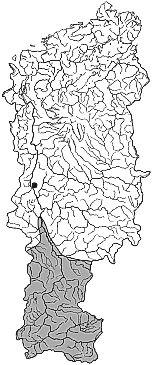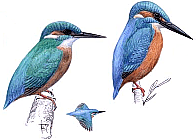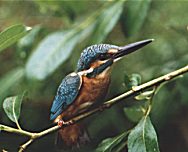|
|
| Main |
| Systematic List |
| Photo |
| Central Siberia |
| Guest book |
| Awards |
| SEARCH |
|---|
|
|
Alcedinidae |
|---|
Kingfisher Alcedo atthis (Linnaeus, 1758)
|
 This species is typical mainly of the
forest-steppe and steppe regions of Central Siberia and, to a lesser extent, of the areas
of subtaiga. It occurs near Kansk, Krasnoyarsk, Achinsk, and Minusinsk, along the Abakan,
Tuba, and the lower Kebezh Rivers on the upper reaches of the Yenisey, at the Mozharskiye
Lakes, and on the Chuna River, a tributary of the Angara River (Tugarinov 1927). The
northernmost breeding site reported by Scalon and Sludsky (1941) on the Verkhny Imbak
River, opposite the mouth of the Yeloguy River, seems doubtful. The species was observed
and probably nested near Pogodayevo at 59° N in southern taiga in 1977. In Yenisey mid
taiga, it was recorded near Verkhne-Imbatskoye (Scalon and Sludsky 1941) and on June 15,
1978, near Mimoye on the Varlamovka River, 40 km east of the Yenisey. In the southern part
of the subzone near Vorogovo, the Kingfisher was seen in 1977 on several occasions on a
river arm outside the village after mid June; nesting is probable. A.Ya. Tugarinov and S.A. Buturlin considered the Kingfisher rather common in the south of the Yeniseysk area and in the Ket' River basin (Tugarinov and Buturlin 1911). K.A. Yudin observed it only in the vicinity of Krasnoyarsk (Yudin 1952). Meanwhile, E.A. Krutovskaya, who found the species to be common in the Stolby Reserve, reported that it was common 50-80 years ago at the mouths of the Laletina and Bykovskaya Rivers near Krasnoyarsk but could no longer be found there (Krutovskaya 1958). Its range in the south of Central Siberia has probably diminished in size as a result of the pollution and eutrophication of once suitable water bodies. It can be considered at most common throughout its range, and in subtaiga and southern taiga it is rare and occurs only locally. It occupies only clear bodies of water and is rare on rapid mountain streams. The birds dig their own nesting burrows into steep slopes often near some water body. |
[Back] |
|
|
|
|
Сайт разработан и поддерживается кафедрой прикладной экологии и ресурсоведения СФУ

